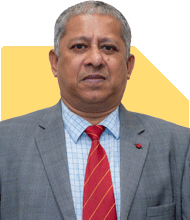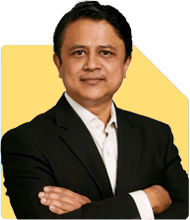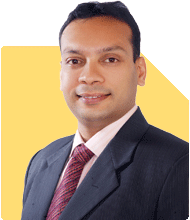IIT KGP Geophysics Graduate with Average GPA: How to Target My Resume?
Prof Suvasish Mukhopadhyay | Answer |Ask -Follow
Career Counsellor - Answered on Nov 09, 2024
He has guided and motivated graduate and postgraduate students in science and technology to choose the right course and excel in their careers.
Professor Suvasish has authored 47 books and counselled thousands of students and individuals about tackling challenges in their careers and relationships in his three-decade-long professional journey.... more

Dear Sir, I have recently graduated from IIT KGP with a masters degree in geophysics. I was very unwell during the duration of my academic life and so my GPA is very average. I am also currently learning machine learning. I know that I need to submit my resume in a targetted manner, but I'm a little clueless about how to do that. Could you please give me some advice? Thanks and regards, A young graduate.
You may like to see similar questions and answers below
Mayank Rautela | Answer |Ask -Follow
HR Expert - Answered on Mar 11, 2022
Mayank Rautela | Answer |Ask -Follow
HR Expert - Answered on Apr 14, 2024
Krishna Kumar | Answer |Ask -Follow
Workplace Expert - Answered on Jun 12, 2024
Nayagam P P |10849 Answers |Ask -Follow
Career Counsellor - Answered on Jan 06, 2025
Dr Karan Gupta | Answer |Ask -Follow
International Education Counsellor - Answered on Jul 22, 2025
Dr Dipankar Dutta |1837 Answers |Ask -Follow
Tech Careers and Skill Development Expert - Answered on Dec 05, 2025
Dr Shyam Jamalabad |108 Answers |Ask -Follow
Dentist - Answered on Dec 05, 2025
Dr Shyam Jamalabad |108 Answers |Ask -Follow
Dentist - Answered on Dec 05, 2025
Dr Shyam Jamalabad |108 Answers |Ask -Follow
Dentist - Answered on Dec 05, 2025
Dr Dipankar Dutta |1837 Answers |Ask -Follow
Tech Careers and Skill Development Expert - Answered on Dec 05, 2025
Ulhas Joshi |280 Answers |Ask -Follow
Mutual Fund Expert - Answered on Dec 05, 2025
Dr Dipankar Dutta |1837 Answers |Ask -Follow
Tech Careers and Skill Development Expert - Answered on Dec 04, 2025
Ravi Mittal |676 Answers |Ask -Follow
Dating, Relationships Expert - Answered on Dec 04, 2025
Anu Krishna |1745 Answers |Ask -Follow
Relationships Expert, Mind Coach - Answered on Dec 04, 2025
Anu Krishna |1745 Answers |Ask -Follow
Relationships Expert, Mind Coach - Answered on Dec 04, 2025






























